Getting you through the Dark Age.
Age of Empires 2 is a classic strategy game, and with its new release, you might be looking for an Age of Empires 2: Definitive Edition beginner's guide to help you get caught up to speed. Unlike the HD edition, this re-release features new graphics, animations, and plenty of features and quality of life improvements. There's also a Microsoft-powered server backend for multiplayer games, so now's as good a time as ever to get into Age 2.
What makes Age of Empires 2 so good is the amount of depth and strategy involved, which is why we have come up with a quick guide to get you started. Be sure to check out our Age of Empires 2: Definitive Edition review if you're wondering whether or not this game is for you.
Jump to:
Getting started
Age of Empires 2: Definitive Edition is an easy game to get into, but it's incredibly challenging to master. The difference between the AI (even on harder difficulties) and experienced human opponents is startling to newer players. Luckily, this guide will teach you all you need to know to handle the basics and start focusing on honing your skills.
In total, there are 37 civilizations in the game to choose from, including two new civs arriving with the "Lords of the West" expansion expected January 26. Some are considered meta, which essentially classifies them as the most popular and considered the best by the community. This is bound to change based on official updates and new playstyles developed by experienced players.
Depending on your playstyle — do you like to sit back and defend, or do you like to attack with cavalry? — your choice of civilization can have a substantial impact on how your games will play out, as well as what options will be available to you.
In skirmish matches against AI or real players, Age of Empires 2: Definitive Edition puts you in control of a civilization. In most cases (save nomad games), you begin with a few villagers, a scout, some herdable animals, and some banked resources. You're tasked with taking all that and building the most powerful force on the map. Villagers handle all your resource gathering and building construction, while military units take care of any threats. These rules differ depending on the game type you're playing.
Our guide for the ages will focus on the standard game type, generally called Random Map skirmishes that can be waged, as mentioned, against AI or human opponents.
Progressing through the ages
We've put together some exact build order guides for you to check out, including an Age of Empires 2: DE Tower Rush strategy guide, an Age of Empires 2 DE Fast Castle strategy guide, and an Age of Empires 2: DE Scout Rush strategy guide. We've even collected some of the best laptops for playing Age of Empires 2: DE. These, however, are best reserved for players who have more than a few games in the bank and are comfortable with the basics.
Following is a rough walkthrough for each age that will help you keep up with rival civilizations.
Dark Age
Never let your Town Center sit idle. Create villagers or research new tech.
The first and foremost age in most matches is the Dark Age. This is where you'll start with only a handful of villagers, a scout unit, and a town center (TC). Upon entering the game, you'll want to build two houses near your TC with starting villagers before sending them to harvest the herdable animals found nearby. At the same time and for nearly the rest of the game, create villagers in a constant stream from your TC. Pro players will stress that your TC should never idle: if you can't create villagers, try dropping off food or try researching Loom. This invaluable research provides your villages with some much-needed additional armor to prevent them from getting killed by wild animals and opponents.
Use your scout to unexplored areas around your base, locating valuable resources like herdable animals (which can be sent back to the TC), berries, stone, wood, and gold. Make use of the waypoint system (Shift+Right-click multiple points on the map) or auto-scouting system, so your scout doesn't require babysitting. While it may be an attractive prospect to use the berry bushes, save these for a little later. Villagers can carry much more meat through hunting, so we'll want to prioritize sheep/turkey and wild animals like boars.
For boars and other wild animals like rhinos and elephants that attack once provoked, you'll want to kite (shoot and run) the beast back to your town center with a single villager, using the rest of your villagers to finish the kill once it's near the TC. As soon as you have six villagers collecting food at your TC, send a new villager to build a lumber camp next to a robust woodline. Send a few more villagers to chop wood before expanding to berries.
Continue creating villagers and gathering food and wood (for houses and a barracks) until you have enough resources to progress to the Feudal Age (you need 500 food). Depending on what type of build order you're going for, you should be ready to advance to the next age around the 20 to 28 villager mark. If you'd like to go straight to Castle Age as quickly as possible, for example, you'll want more villagers. If you're in a rush to create a Stable and get some Scouts onto the field to harass the enemy, you'll want to advance as quickly as possible with fewer villagers.
Dark Age Summary
- Begin making villagers in the town center. Don't forget to build houses to support your population.
- Research Loom when convenient. Can do before luring the nearby boars to prevent accidental villager death.
- Use your scout to explore around your starting location. Continue branching out, not letting it sit idle for long.
- Prioritize wild animals over farming and berry bushes. Eventually, build a Mill and collect berries once you have villagers chopping wood and harvesting animals.
- "Kite" wild animals like boars back to your TC.
- Build a Lumber Camp near a forest to gather wood.
- Advance to the next age (need 500 food and two Dark Age buildings for Feudal Age).
Feudal Age
The Dark Age is getting your feet off the ground, and the Feudal Age is where you really begin to take flight. This period is invested in developing your economy (and military if rushing other civilizations). The Feudal Age is where you'll usually have the enemy scouted and work out which strategy you aim to follow for the rest of the game. This guide will become a little vague from this point on as Age of Empires 2 is all about reacting to your situation.
Primarily, you need to keep creating villagers. Never let your TC idle. With your natural food resources burning out, it's time to start farming. This requires some wood, so you'll want to bolster your wood collection and make a start on gold and stone, if not already done so. A wise move is to stagger farm creation, as they will expire and require wood to be replanted. If all your farms expire at the same time, you'll run out of wood.
Be sure to get familiar with your civilization bonuses and unique units. You'll want to use your civilization's strengths to overcome any weaknesses. Don't go focusing on cavalry as an infantry civ unless you know what you're doing. Also, be sure to scout the enemy's base to see what they're up to. If you see a couple of, say, Archery Ranges, chances are they're coming in hot with Archers. If they're walling the base and you don't see military bases, chances are they're going to boom their economy and head to the next age.
If you plan on challenging your opponent(s), focus on villagers and their military. Ignore any buildings that do not block your way. Taking down any villagers caught off guard will have a major impact on your opponent's economy. The same goes for your own villagers, so consider using buildings as a wall around your important resources. Be sure to queue up farms in your Mill if you have a surplus of wood, which will have the farmers auto-seed the exhausted plots.
Advancing to the Castle Age requires 800 food and 200 gold, and two Feudal Age buildings. These include Blacksmith, Market, Stable, and Archery Range. Which two you build will depend on whether you're focusing on economy or offense, though Blacksmith is pretty much a necessity no matter the way you're playing. There you can upgrade your offensive and defensive units.
Once you've gathered 800 food and 200 gold and built two buildings, it's time to advance to the Castle Age, which is where the fun really begins.
Feudal Age Summary
- Continue developing your economy.
- Put together a light military force if you want to attack or if you see the enemy approaching. Try taking advantage of your civ bonuses.
- If attacking your opponent(s), focus on taking out villagers and picking off military.
- Commence (or expand) the collection of stone and gold.
- Fully scout out the enemy to see what units they'll produce.
- Switch to farms for food generation.
- Don't have your TC idle. More villagers needed.
- Consider walling your base if you're playing defensively or simply to protect your economy from later raids.
Castle Age
Castle Age is arguably the most important step along your civilization journey. This is where powerful buildings like the castle become available, which can produce some killer unique units and research and provide additional firepower with a barrage of arrows — castles can be used in both offense and defense, but they're incredibly expensive. In most cases, you'll want to build one (or at least have the stone resources to build one) as soon as possible after advancing to the Castle Age. A popular spot is overlooking a gold mine or cutting off an approach point to your base. Always try to build a castle on a hill, which gives it more offensive and defensive power.
You'll want to build new Town Centers to build villagers faster and provide additional means to store resources like food from farms and wood from nearby trees. Three TCs will pump out villagers much quicker than one TC, allowing you to get ahead in villager count. A Monastery is also required to earn gold from collected relics, which can be captured with Monks. The Siege Workshop is an important building in your arsenal (aside from civilizations that suffer from a lack of siege units). Rams are ideal for soaking up damage from ranged units and can bring down buildings. Mangonels are a great counter to massed archers (try the attack ground function), and Scorpions make short work of grouped infantry.
Never fixate on a single unit or type. Be proactive and reactive to what's being thrown at you.
You'll want to continue to poke at your enemy or build up defenses and anticipate an attack, focusing on upgrades across your military through the Blacksmith and appropriate creation buildings (like the Archery Range or Stable). Because gold is a limited resource, you'll generally want to invest it into upgrades for one particular unit. For example, if you're heading down the cavalry route, there's no sense in upgrading attack and armor for archers.
Generally speaking, you'll want to use a mixture of expensive units like Knights (which require gold to create) alongside "trash" units (which require only food or wood) like Pikemen or Skirmishers, the latter which you send in large numbers to overwhelm the enemy.
If you're being pushed back by a specific unit, consider countering that unit with a more effective military. If they're swarming your cavalry with pikes, look to build Archers and Scorpions as a countermeasure. Never fixate on a single unit or type; Age of Empires 2 requires you to be proactive and reactive to what's being thrown at you.
Advancing to the Imperial Age costs a staggering 1,000 food and 800 gold, so it's considered "late game."
Castle Age: Summary
- Build more Town Centers near valuable or vulnerable resources as soon as possible. Continue creating villagers from all TCs.
- Build a Castle near valuable resources or on a strong point (hill or choke).
- Consider researching upgrades at resources camps. Lumbers Camps, Mining Camps, Mills, etc., all have technologies.
- Keep an eye out for relics, represented by a white icon on the minimap. Collect them with Monks built at a Monastery.
- Consider building siege units.
- Research upgrades for your units following a build order.
- Continue to build your economy (villagers!) and see what your foes are doing to consider counter units.
- Build a market and trade with allies. (This also allows you to trade resources or buy/sell.)
Imperial Age
Imperial Age isn't too different from the Castle Age. All this advancement provides are additional researches and unit upgrades to provide you with an advantage. There's also one of the most important units in the game — Trebuchets. These are like Catapults, but have incredible range and are best suited for tackling buildings without taking damage. Just be sure to protect them, as military units will easily take one out if it's unguarded.
Don't forget about your economy. Trees will be cut and ores collected. Be sure to revisit your economy and move villagers to new areas frequently. Always be mining stone, gold, and cutting wood to supply your army, and don't forget to rebuild your camps to be as close as possible to resources. If you haven't already built a market and begun trading with any allies, do so now.
Imperial Age Summary
- Research techs in your buildings and unlock elite unit upgrades.
- Build valuable Trebuchets to take down Castles and other buildings.
- Focus on balancing your economy. At this point, you should have close to enough Villagers, but be sure to keep recreating any that are killed in raids. If you need room for more military and have banked resources, don't be afraid to delete villagers to make population space.
- Continue to mine stone, gold, and chop wood, moving villagers to new resources.
Some handy tips
Hotkeys
Hotkeys save valuable seconds when moving across the map and selecting units/buildings. The time it takes for you to click somewhere on your minimap and select your TC to create a villager is wasted compared to using hotkeys (by default H for the TC) to achieve the same result, but with seconds to spare.
Try not to waste units
Your military is valuable. Yes, even that single scout you start with. Especially in the early game, do not waste your units. If you think you'd lose an engagement, choose to approach it differently or not at all. Live to fight another day, as the saying goes. Never, ever send in a stream of single units. Mass a group before sending them into battle. If you see an enemy trickling units toward your base, plan a sortie to cut off the reinforcements one at a time.
Never let your Town Center idle
Honestly, I know I've banged on about this a few times in this guide, but it's not without good reason. Your TC should always be creating new villagers to bolster your economy or replace killed peasants, at least until you reach the Post-Imperial portion of the game. I cannot stress just how important this is. If you do not have enough food for new villagers, your economy has not been configured correctly.
Utilize trade carts
If you have allies on your team, be sure to build marketplaces and many trade carts to enjoy the passive gold income. Build markets as far apart as possible, and be sure to protect trade lines from raids.
Counter the counters
If you're struggling to take down counters to your prized unique units, utilize your other military buildings to create counters of your own to counter the counters. Some inception stuff right there. Never go into a head-on battle against units that naturally counter what you have on the field. For example, don't send in your expensive upgraded cavalry against grouped pikemen, no matter how tempting it might be.
Age of Empires 2: Definitive Edition

Microsoft completely revamped and re-released Age of Empires 2. Unlike the HD edition, this game comes rocking all-new graphics, sprites, animations, features, and other quality of life improvements.

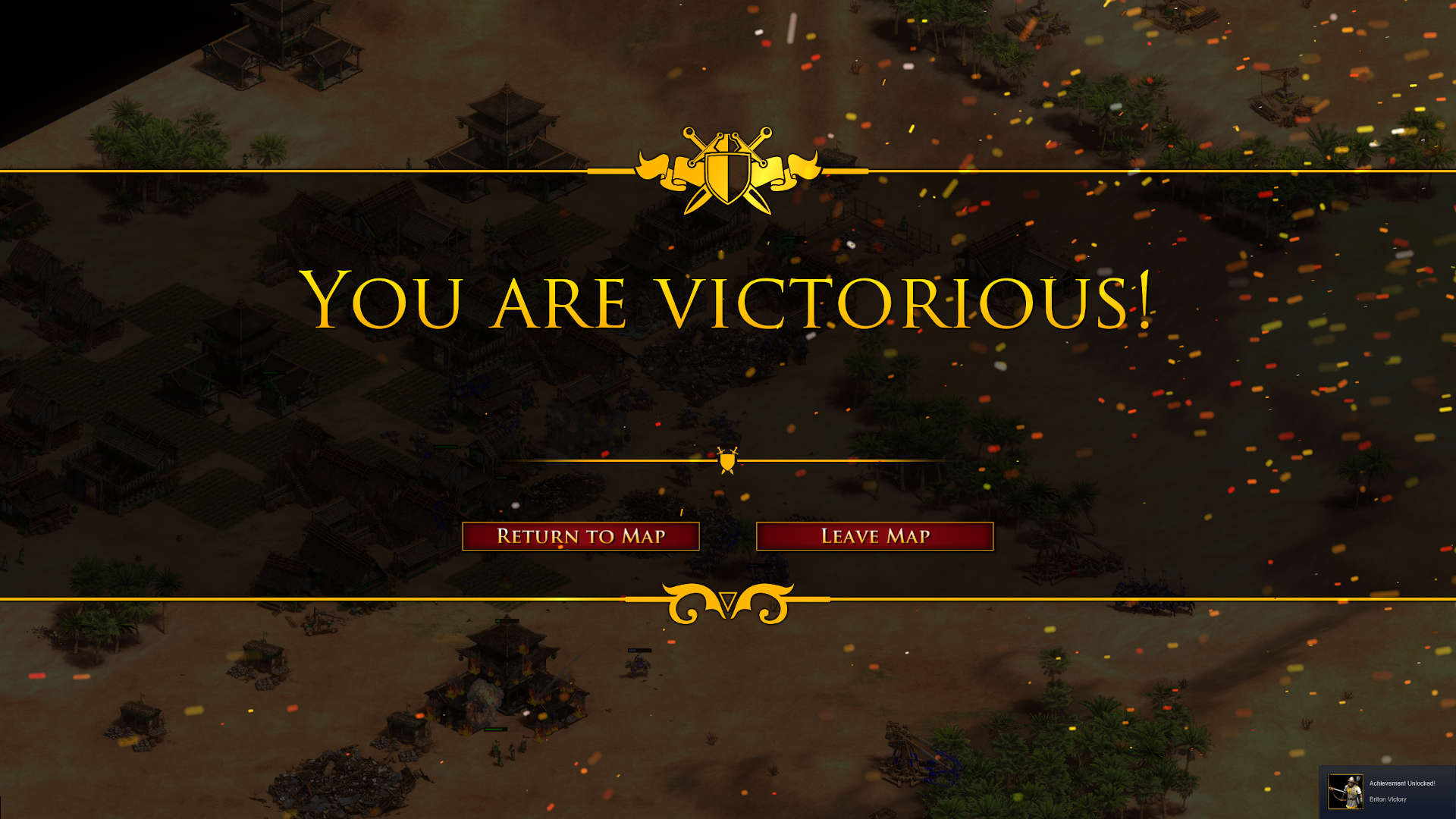
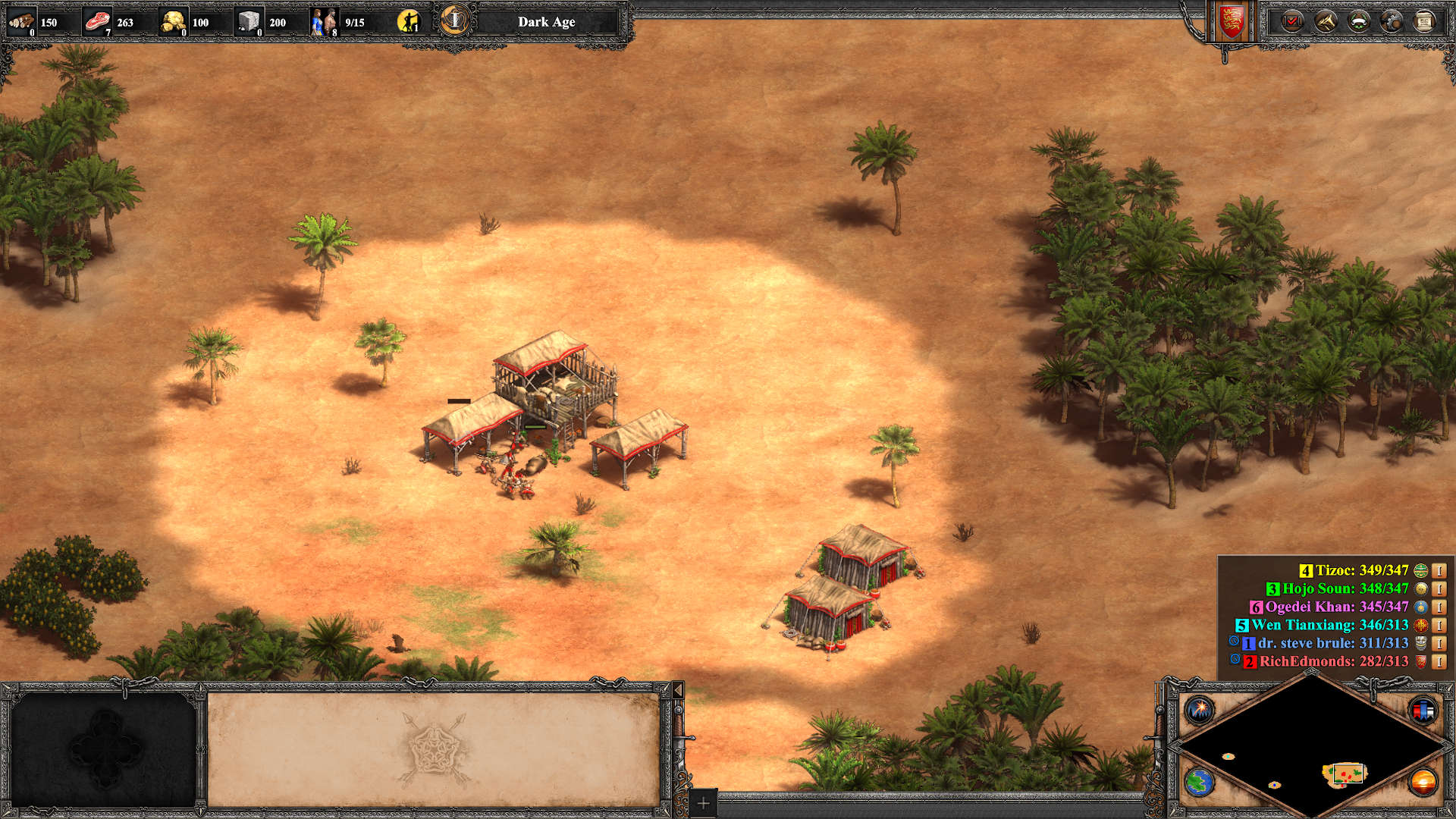
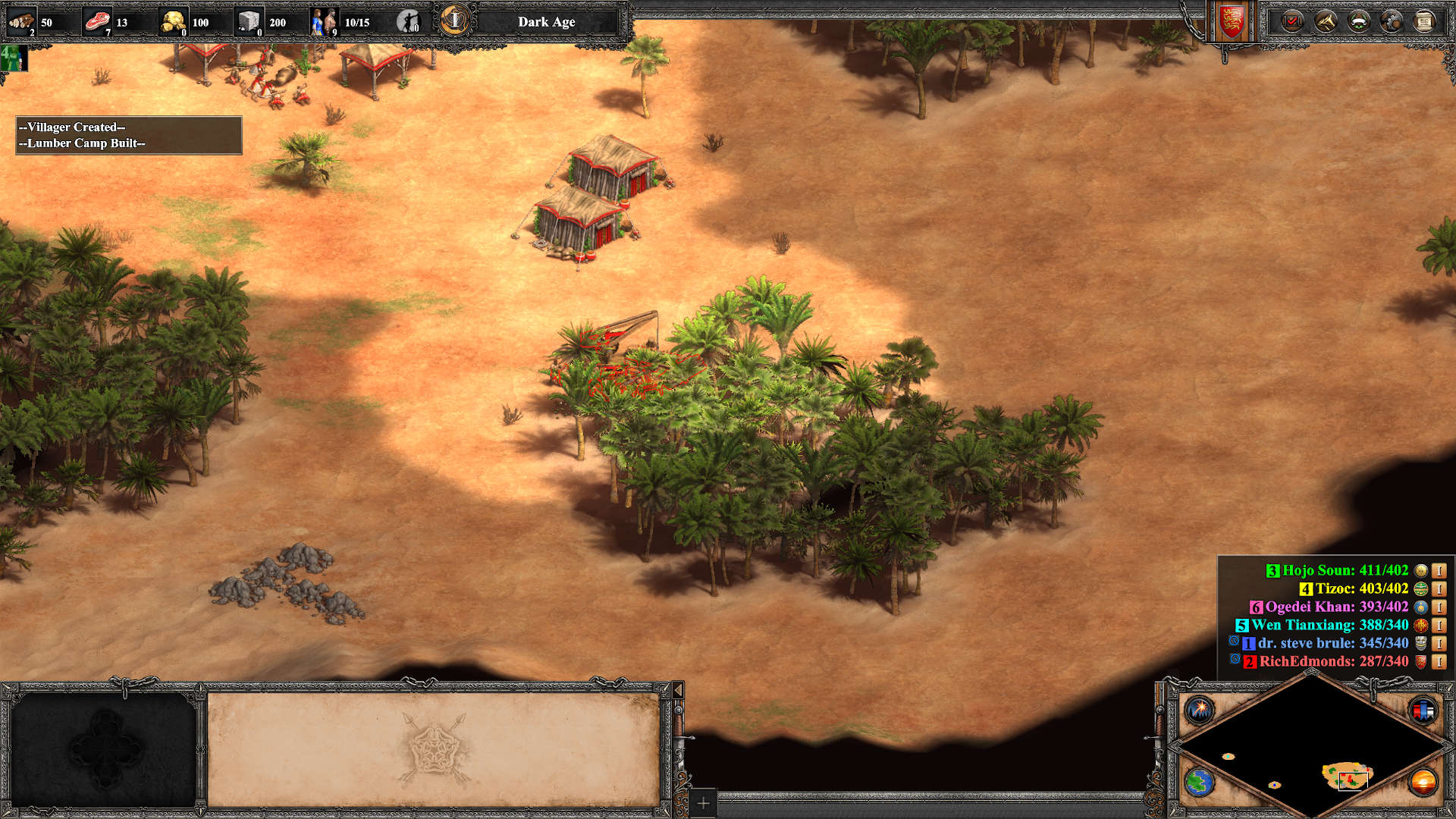
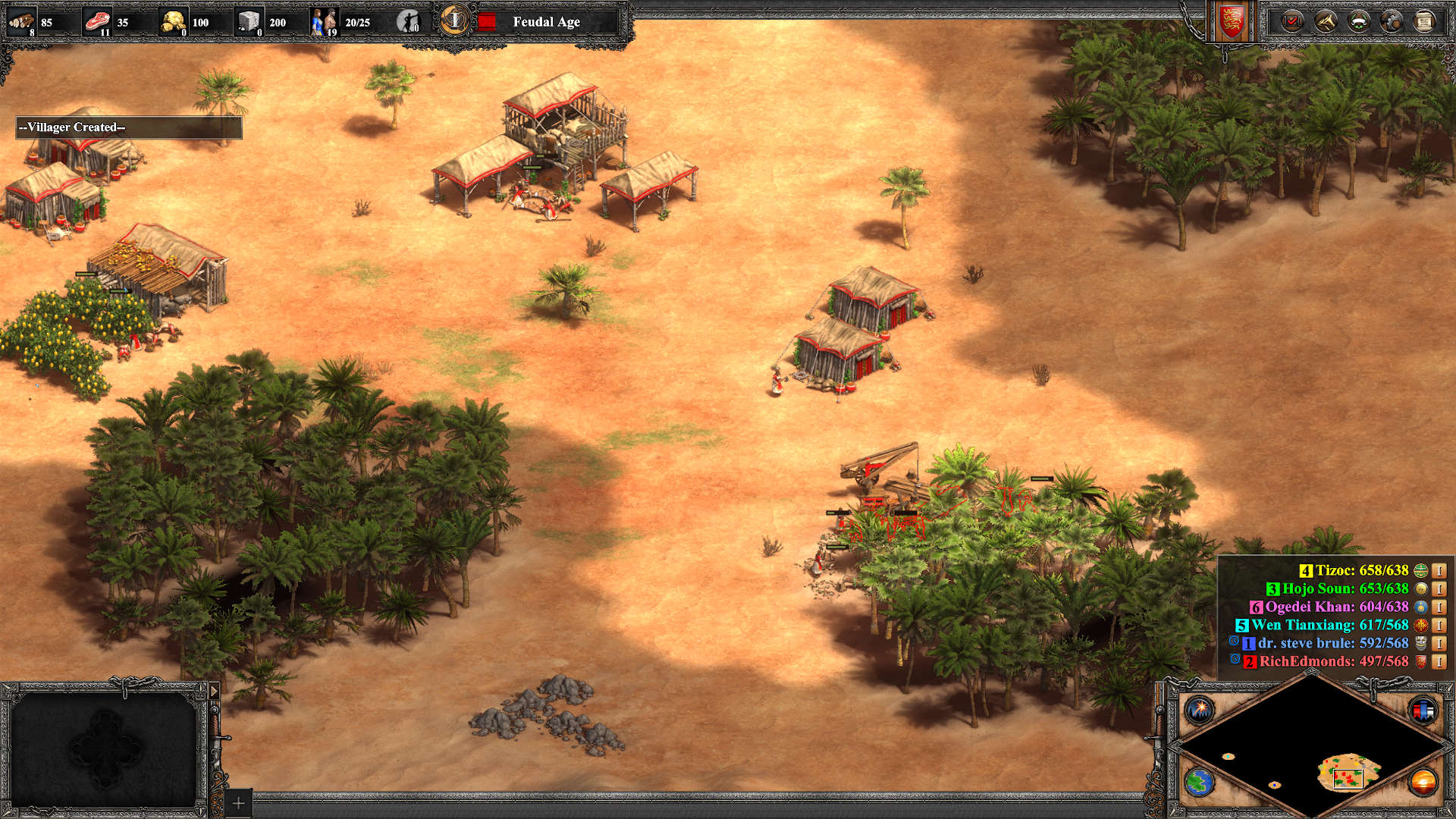
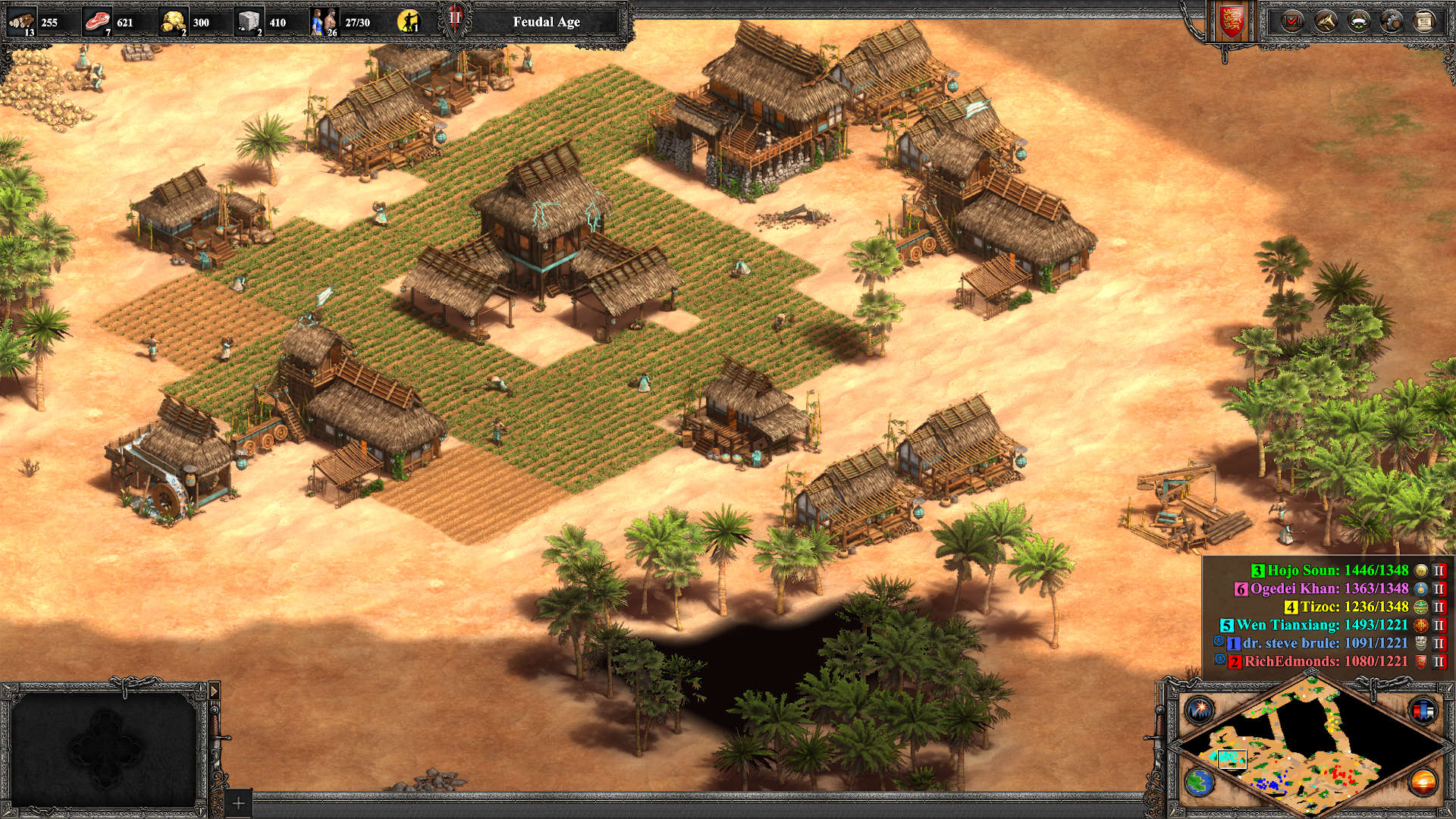
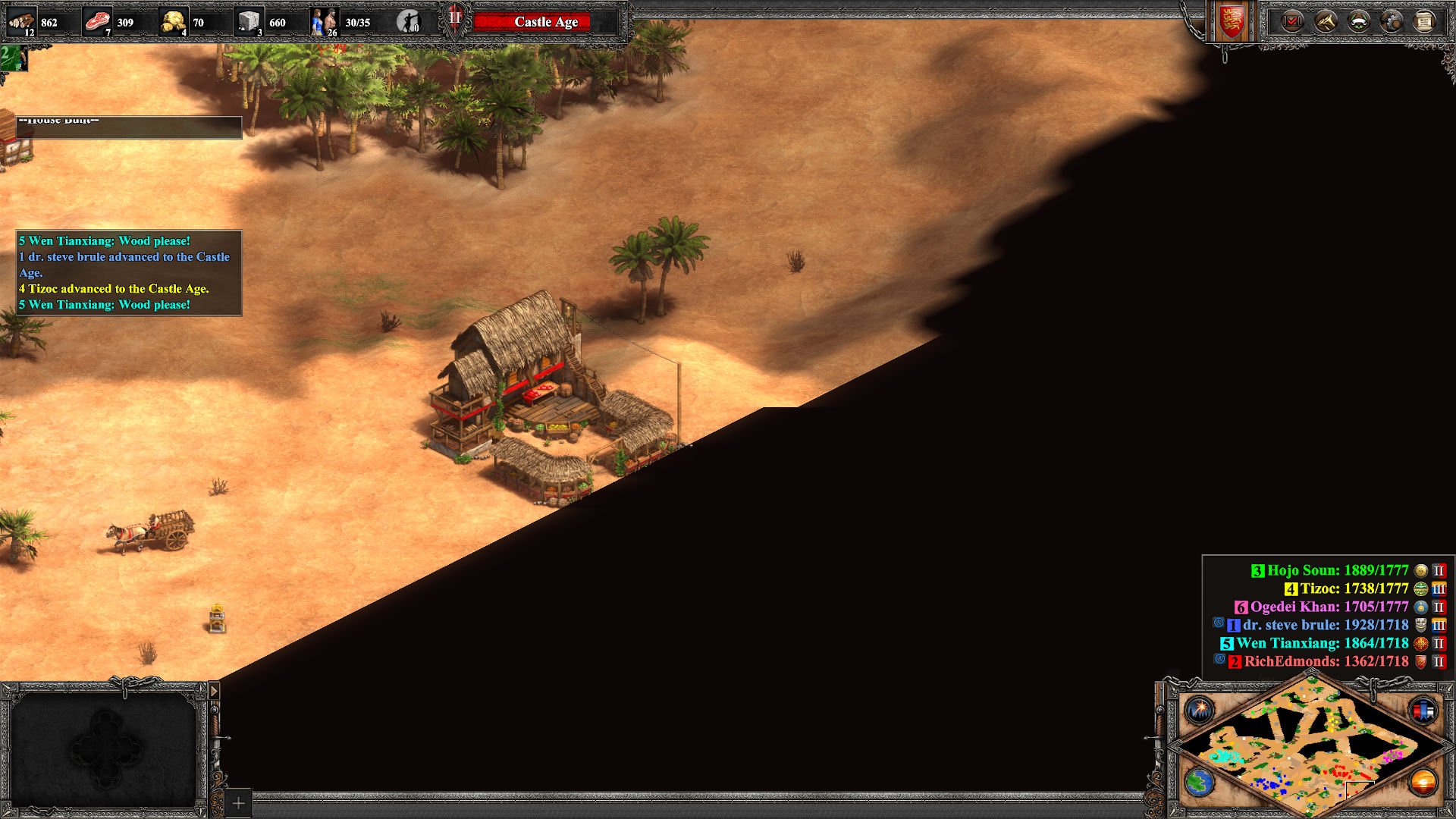
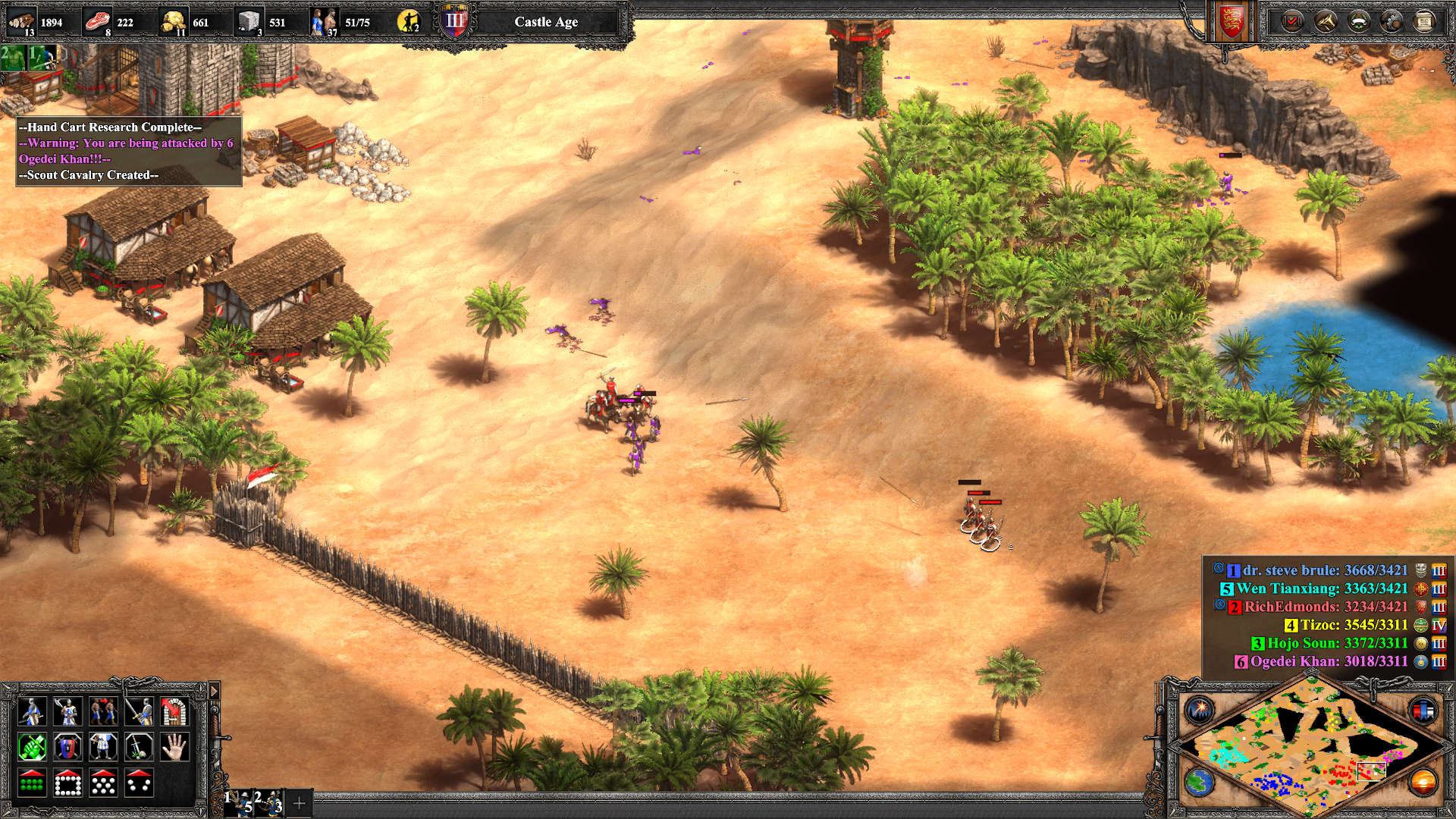

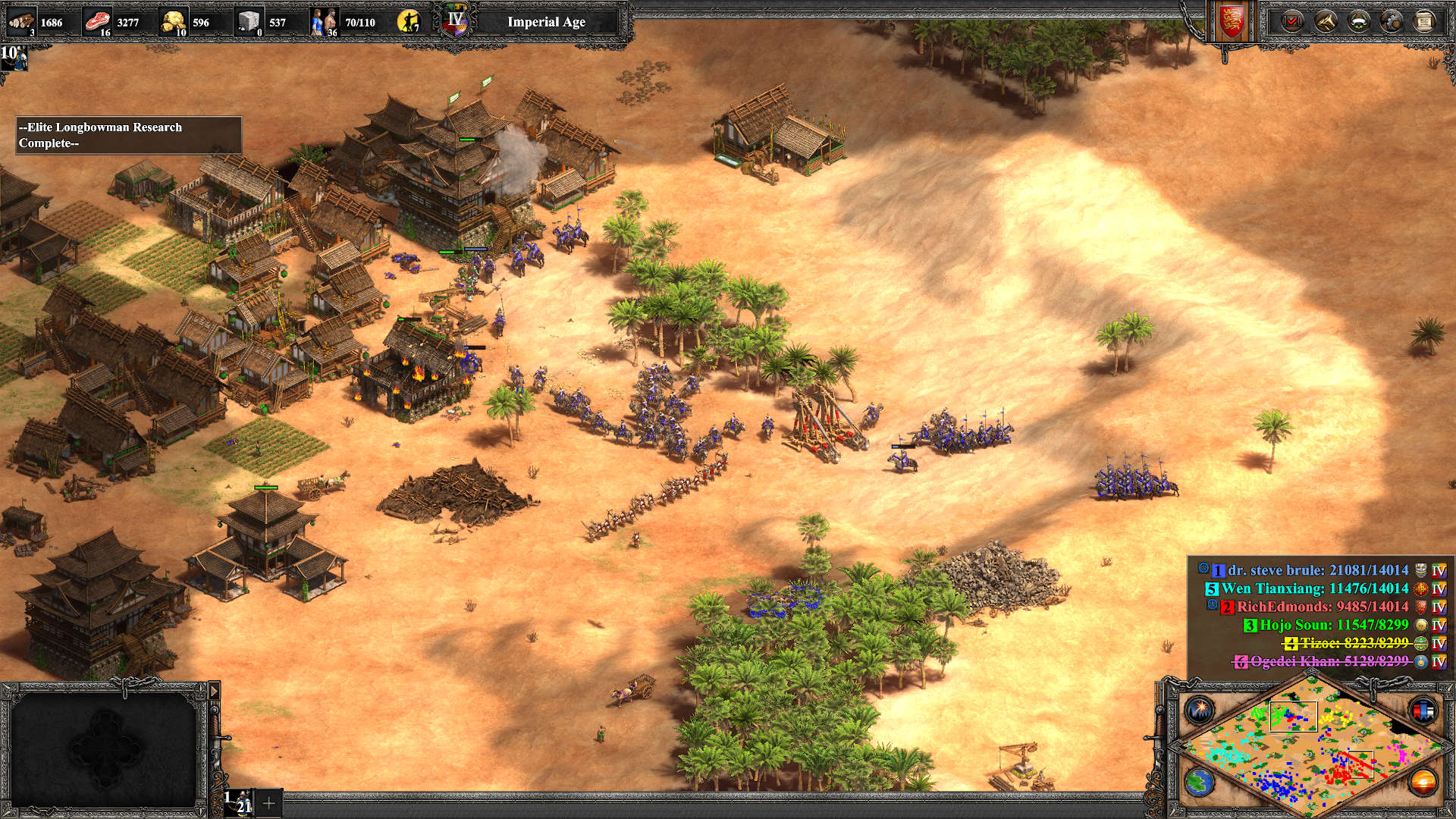
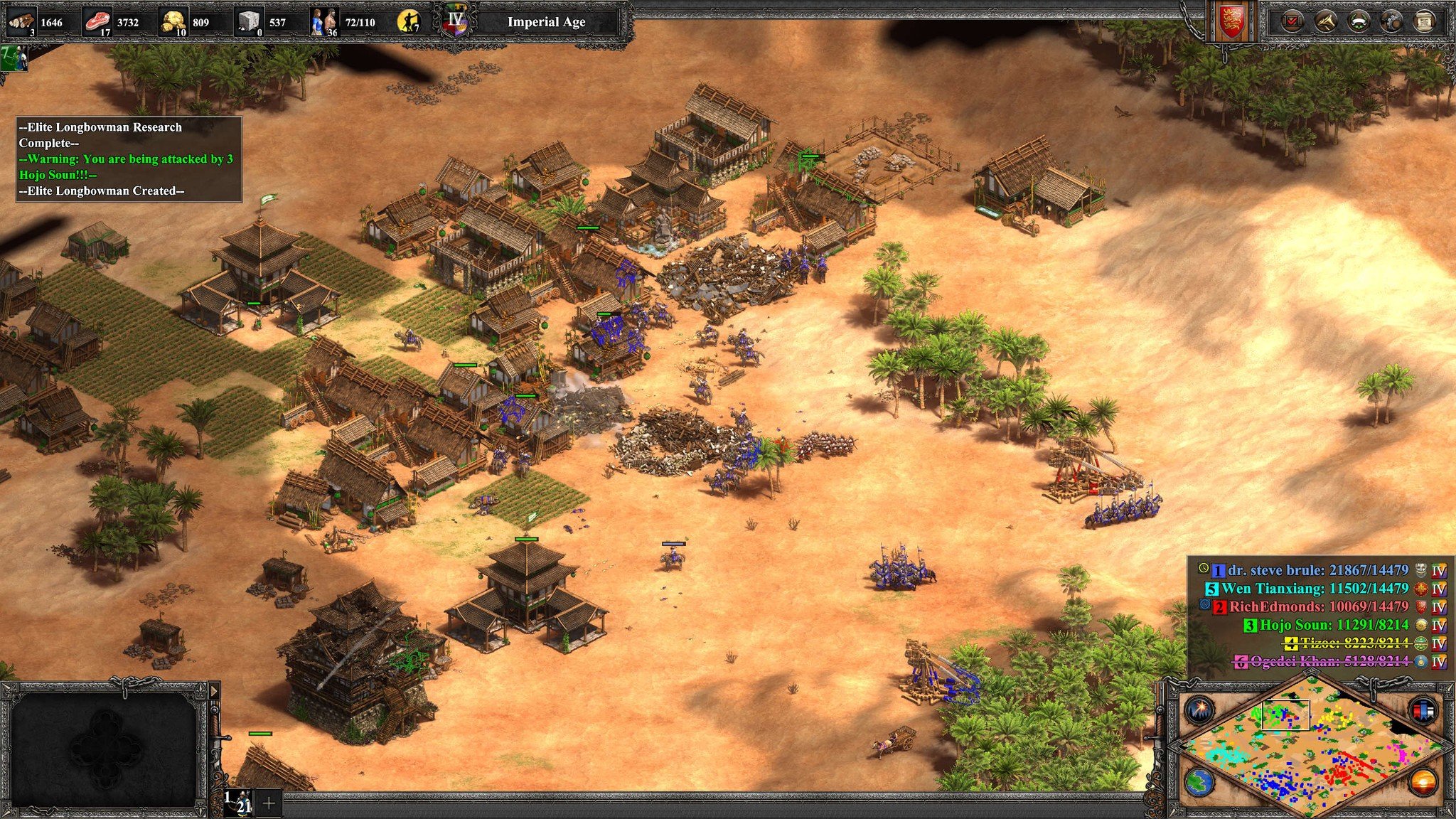


0 comments:
Post a Comment